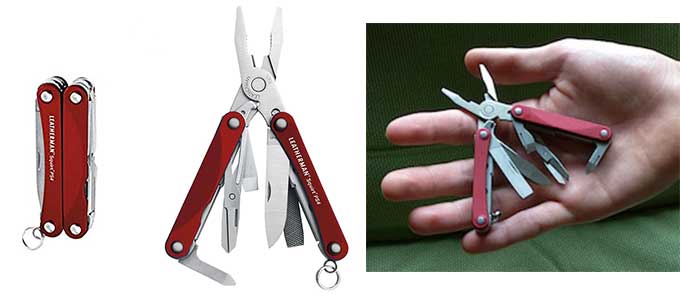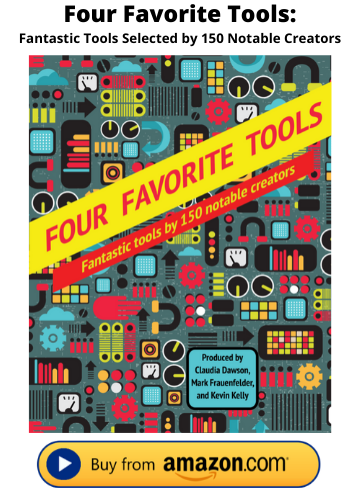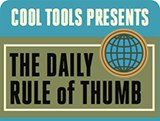23 April 2025
Book Freak 178: Carl Sagan’s guide to critical thinking
Advice from The Demon-Haunted World

In The Demon-Haunted World, Carl Sagan makes the case for science and critical thinking as essential tools for human progress and survival. The book is a celebration of scientific inquiry and a warning about the dangers of uncritical thinking, pseudoscience, and superstition. Sagan argues that science is more than a body of knowledge; it’s a way of thinking — a candle in the dark that helps illuminate truth and dispel falsehoods.
Four key pieces of advice from the book:
Use the Baloney Detection Kit
“In the course of their training, scientists are equipped with a baloney detection kit. The kit is brought out as a matter of course whenever new ideas are offered for consideration. If the new idea survives examination by the tools in our kit, we grant it warm, although tentative, acceptance. If you’re so inclined, if you don’t want to buy baloney even when it’s reassuring to do so, there are precautions that can be taken; there’s a tried-and-true, consumer-tested method.
“What’s in the kit? Tools for skeptical thinking.
“What skeptical thinking boils down to is the means to construct, and to understand, a reasoned argument and, especially important, to recognize a fallacious or fraudulent argument. The question is not whether we like the conclusion that emerges out of a train of reasoning, but whether the conclusion follows from the premises or starting point and whether that premise is true.”
Question Authority
“One of the great commandments of science is, ‘Mistrust arguments from authority.’ (Scientists, being primates, and thus given to dominance hierarchies, of course do not always follow this commandment.) Too many such arguments have proved too painfully wrong. Authorities must prove their contentions like everybody else. This independence of science, its occasional unwillingness to accept conventional wisdom, makes it dangerous to doctrines less self-critical, or with pretensions to certitude.
Test Your Hypotheses
The reliance on carefully designed and controlled experiments is key. We will not learn much from mere contemplation. It is tempting to rest content with the first candidate explanation we can think of. One is much better than none. But what happens if we can invent several?”
Maintain Wonder While Being Skeptical
“At the heart of science is a balance between two seemingly contradictory attitudes – an openness to new ideas, no matter how bizarre or counterintuitive, and the most ruthlessly skeptical scrutiny of all ideas, old and new. This is how deep truths are winnowed from deep nonsense.”
04/23/2522 April 2025

Octave ukulele
A Rich-Toned Hidden Gem in the String Family
For the past year and a half, I’ve been exploring the octave ukulele, a unique instrument that has brought me great joy. An octave ukulele is essentially a baritone ukulele fitted with octave strings. While you can’t yet buy one in stores, its rich, deep tone reminds me of a viola—quite different from the high-pitched sound typically associated with ukuleles. My setup cost $149 for the amplifier-ready instrument, $25 for the strings (available from Starlight Ukes), and $15 for professional string installation.
I’ve documented my octave uke journey on two websites: Octave Ukes and Dylan on Ukes.
During my successful liver transplant surgery last year, I brought my octave uke to the hospital and created several YouTube music videos from my bed. You can watch my favorite recording here. I hope to see octave ukes become widely available in stores and online—they could offer an accessible, affordable entry point into music-making for both young people and adults.
As a maker, I find endless joy in exploring this instrument’s capabilities. For guitar players seeking a new musical dimension, the octave uke offers an exciting opportunity. You can learn the basics in under 20 minutes, and you might find yourself eager to play first thing every morning.
04/22/2522 April 2025
On the Loom / Toys of the ‘50s, ’60s and ’70s
Issue No. 63
ON THE LOOM – A MODERN GUIDE TO WEAVING FOR CRAFTERS AND MAKERS
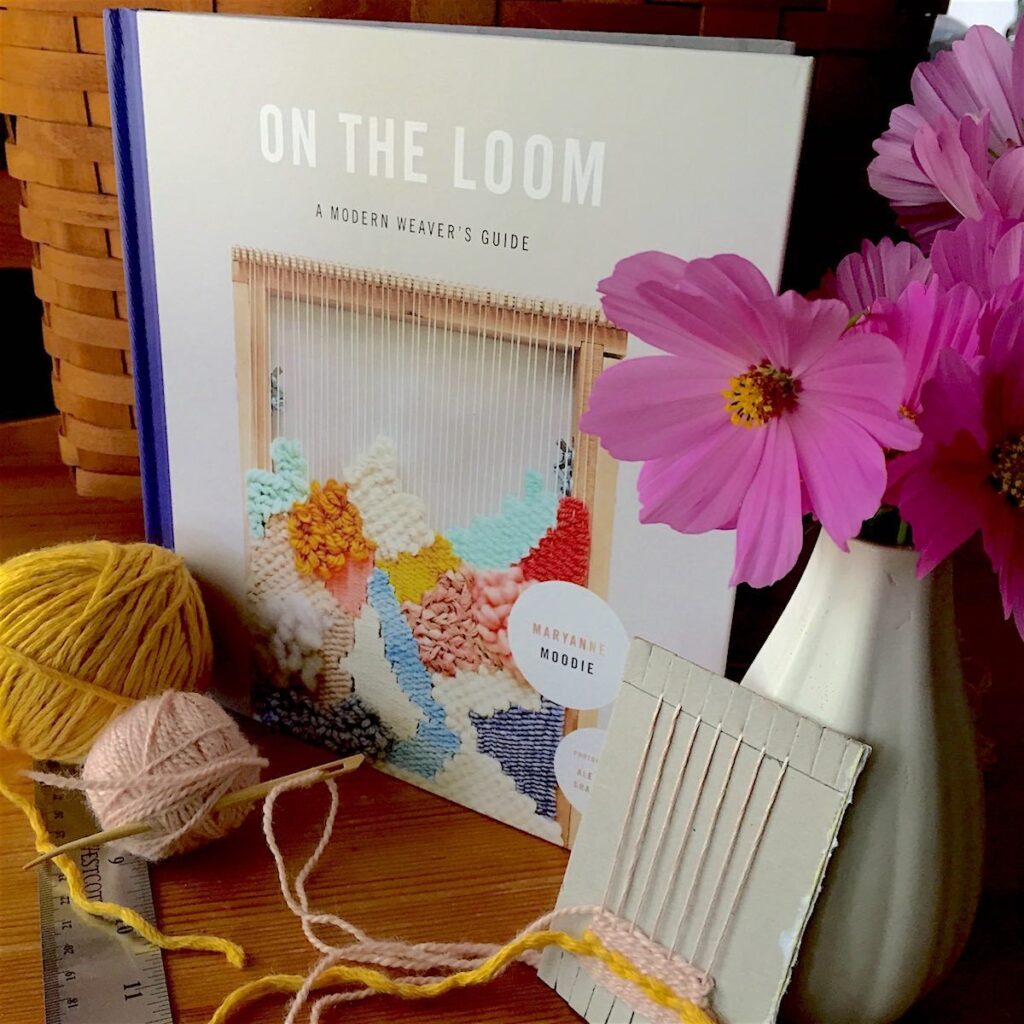

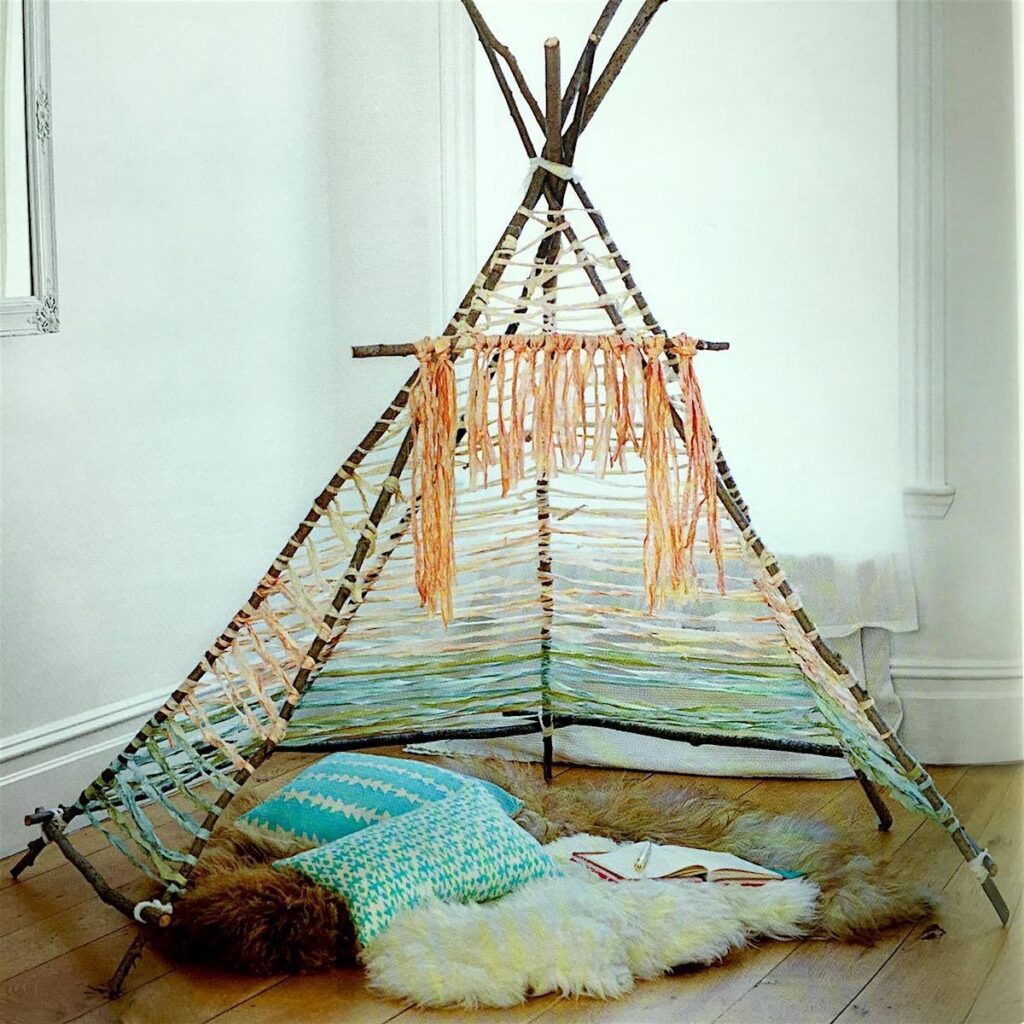


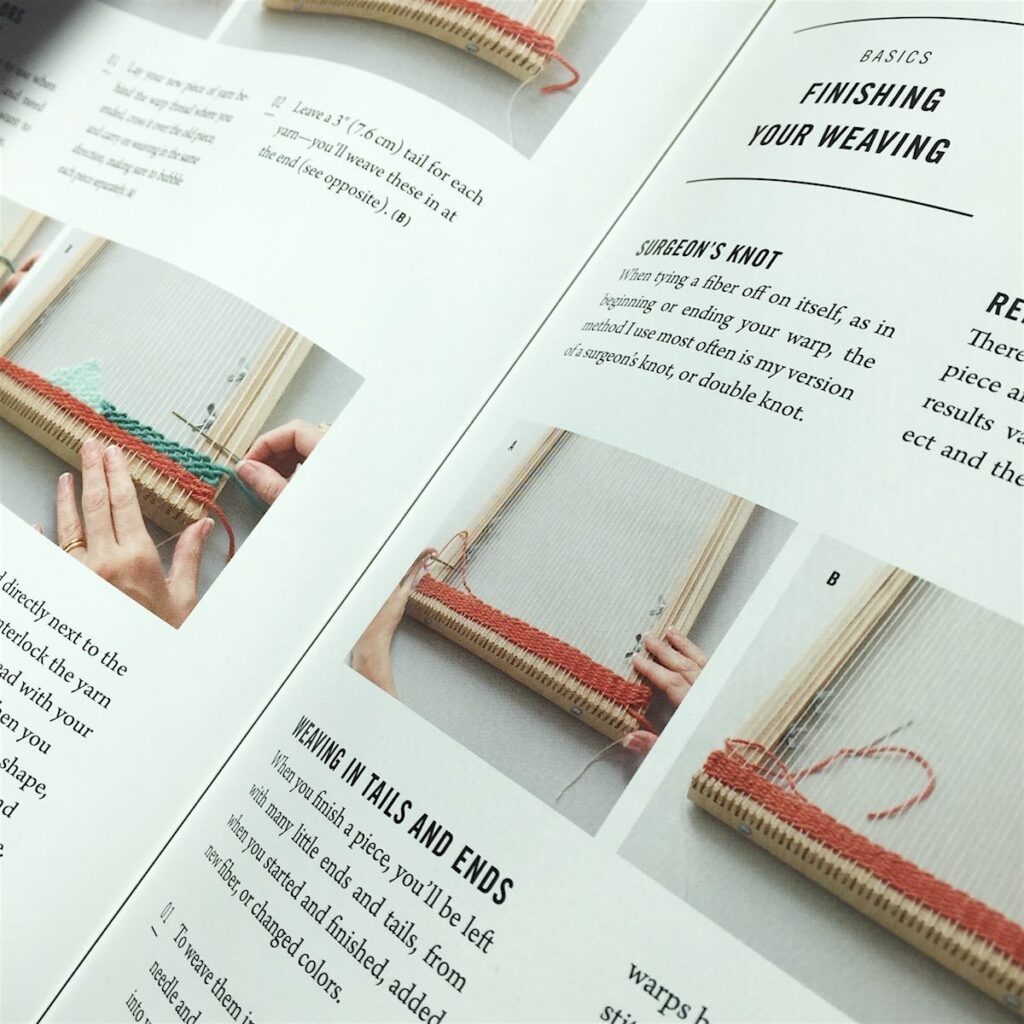
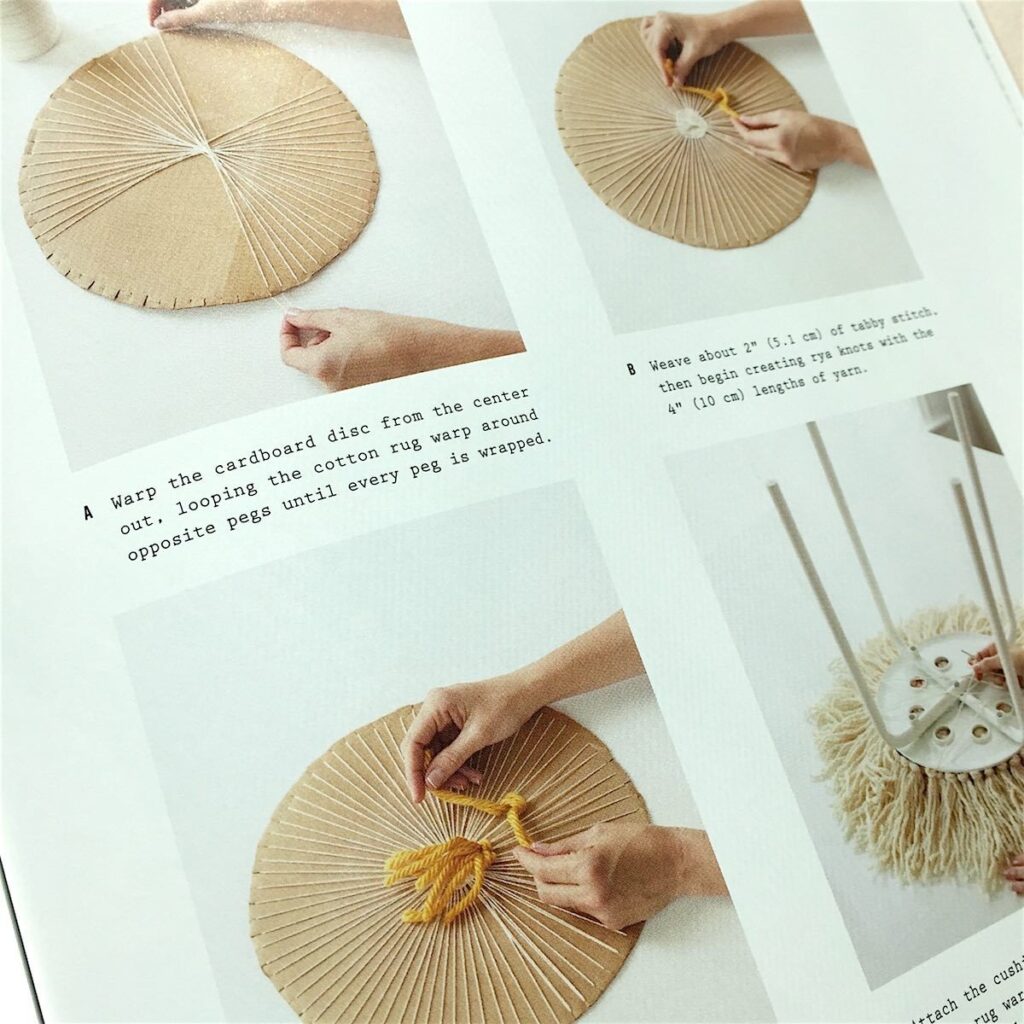
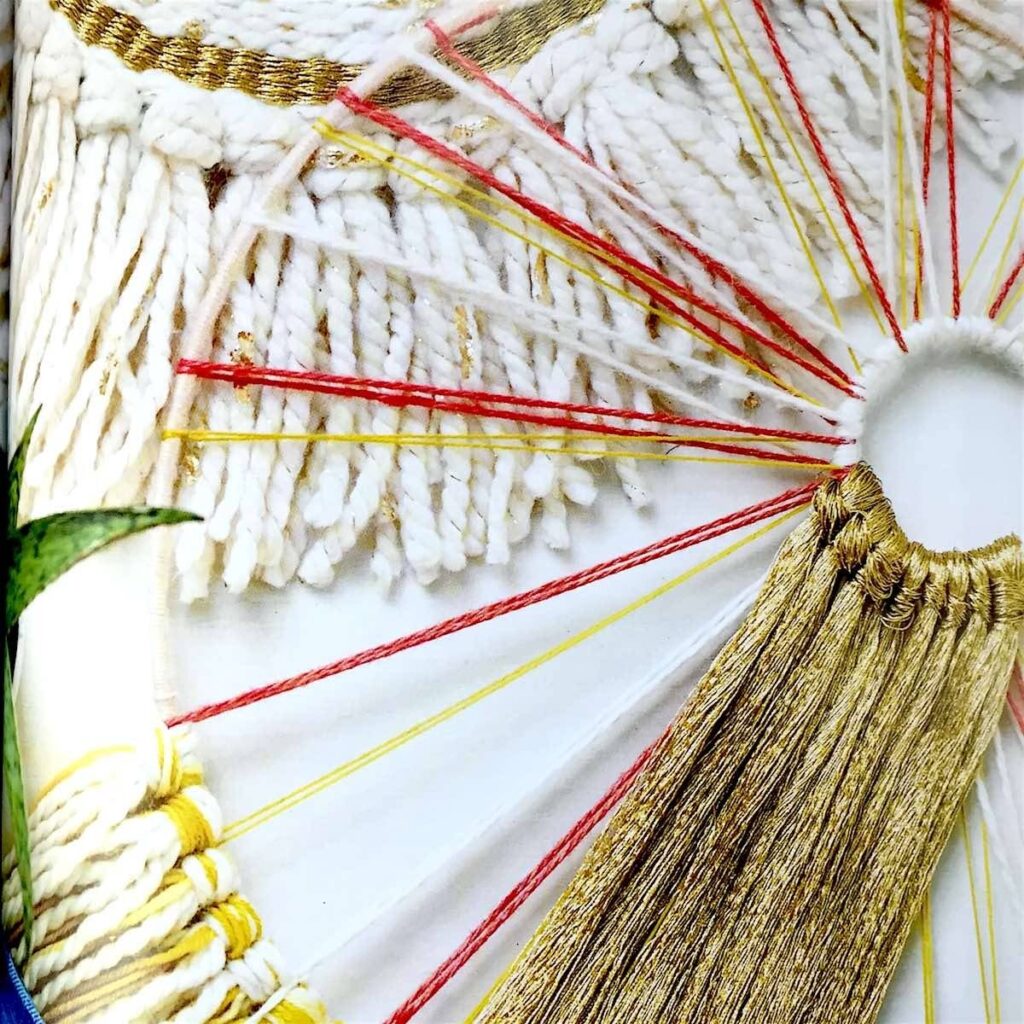
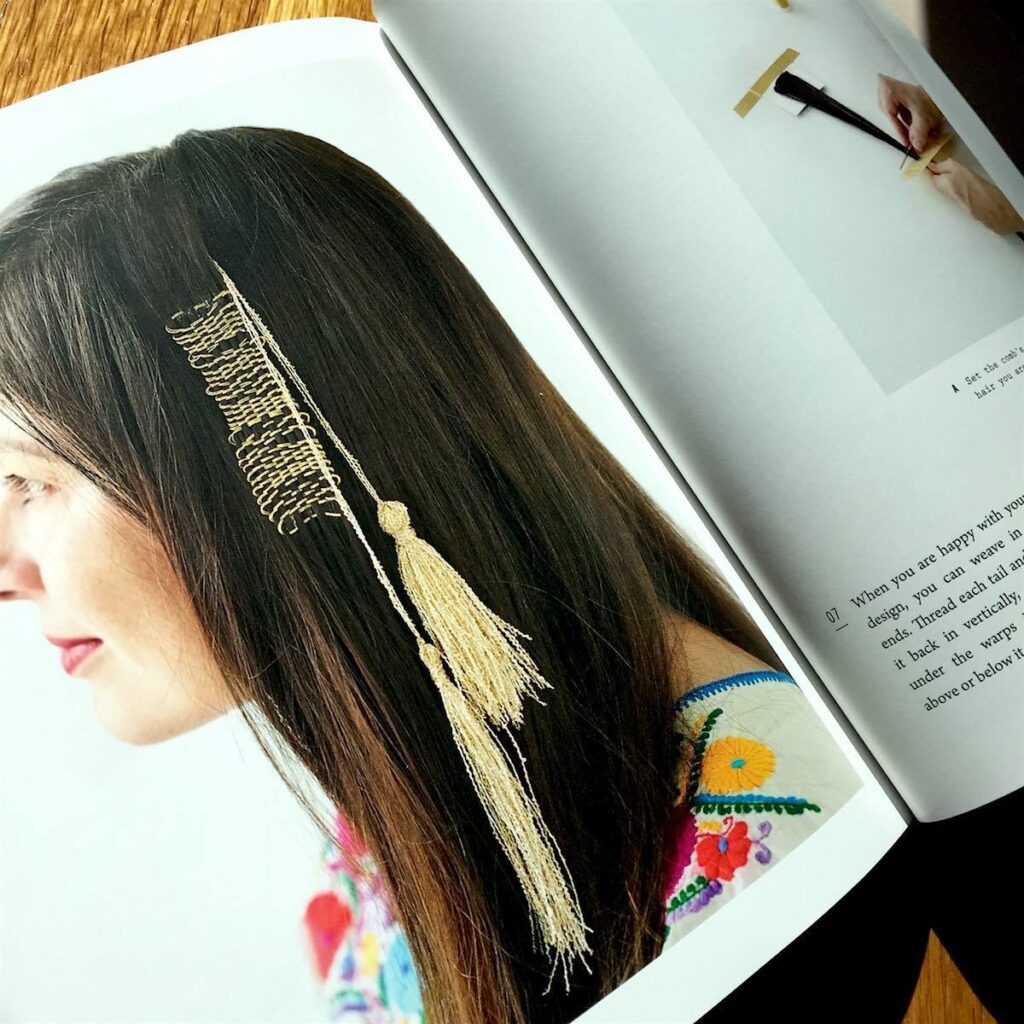
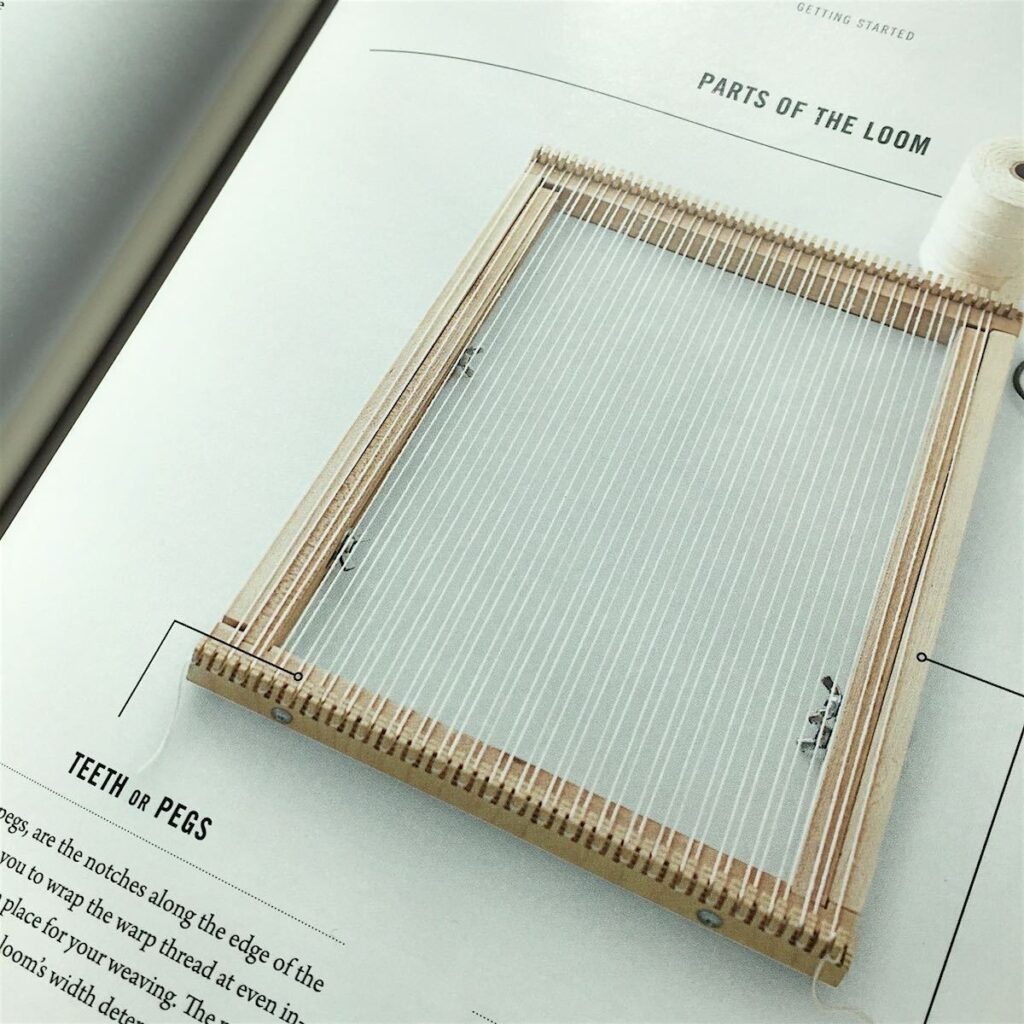
On the Loom: A Modern Weaver’s Guide
by Maryanne Moodie
Harry N. Abrams
2016, 144 pages, 9 x 9.5 x 0.8 inches (hardcover)
As a knitter and maker of things in general, I have long been interested in weaving. I found Maryanne Moodie’s lushly woven wall hangings while clicking myself down a yarny rabbit hole of pretty things on the internet and have been a fan ever since. The release of On the Loom: A Modern Weaver’s Guide brings Moodie’s weaving workshops home to those of us too far from a major city to make it to one of her wildly popular classes.
The book hosts a wide range of projects, both functional and decorative, with step-by-step instructions that are clearly written and beautifully photographed. All of the projects use a handheld frame loom, which, Moodie says, is the best, most accessible place to start (frame looms are small, inexpensive, and easy to find or make). If you’re like me and don’t have a loom yet but do have a huge stash of yarn and terrible wait-reflex, you can still jump right in – most of the projects in On the Loom don’t require a pre-made frame loom at all, but rather use cardboard, cardstock, or found objects like branches, pots, and even bicycle baskets.
If you’re completely new to fiber arts, Moodie includes an encouraging, unbiased overview of yarn and fiber characteristics. The tips she lays out for warping, stitching, and design in the “Getting Started” chapter are included, with page numbers, throughout each project for easy reference while making. Easy to navigate and thorough in scope, this book lives up to its name as true guide to weaving. – Mk Smith Despres
TOYS OF THE 50S, 60S AND 70S PRESENTED BY THE KIDS WHO PLAYED WITH THEM


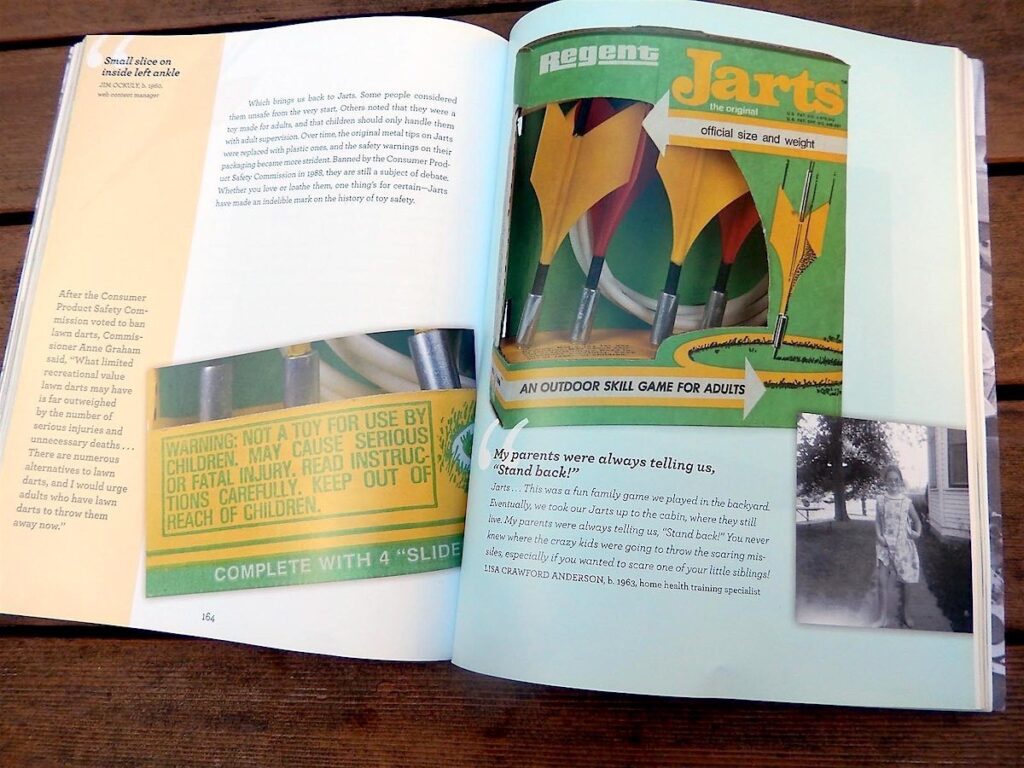
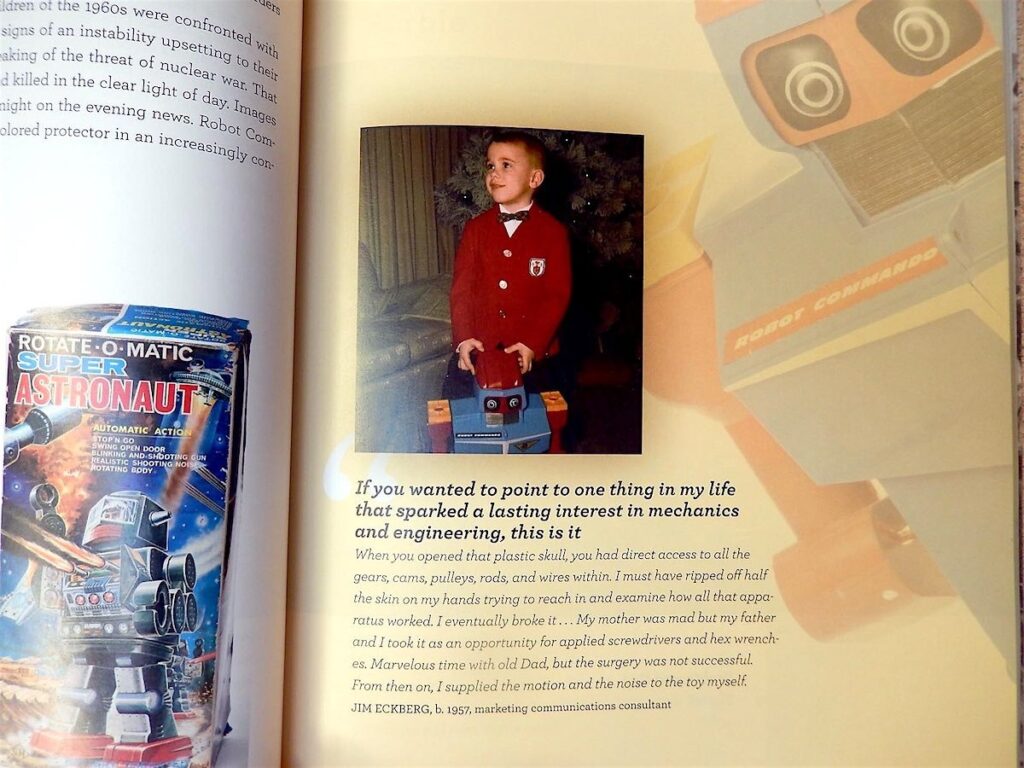
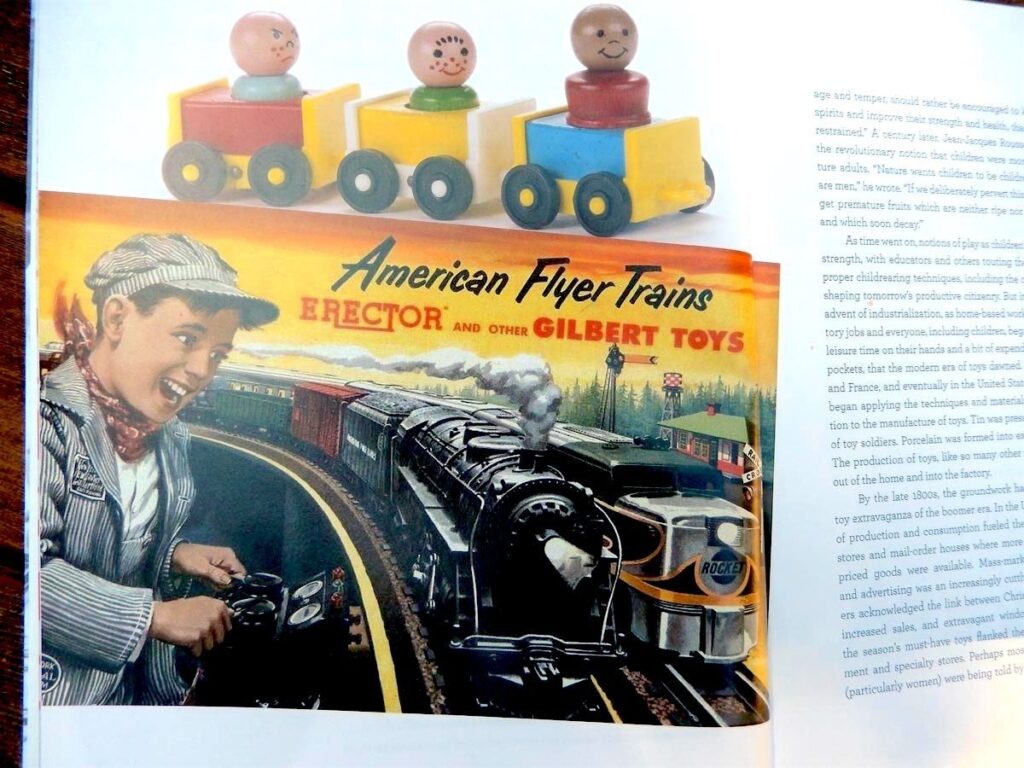
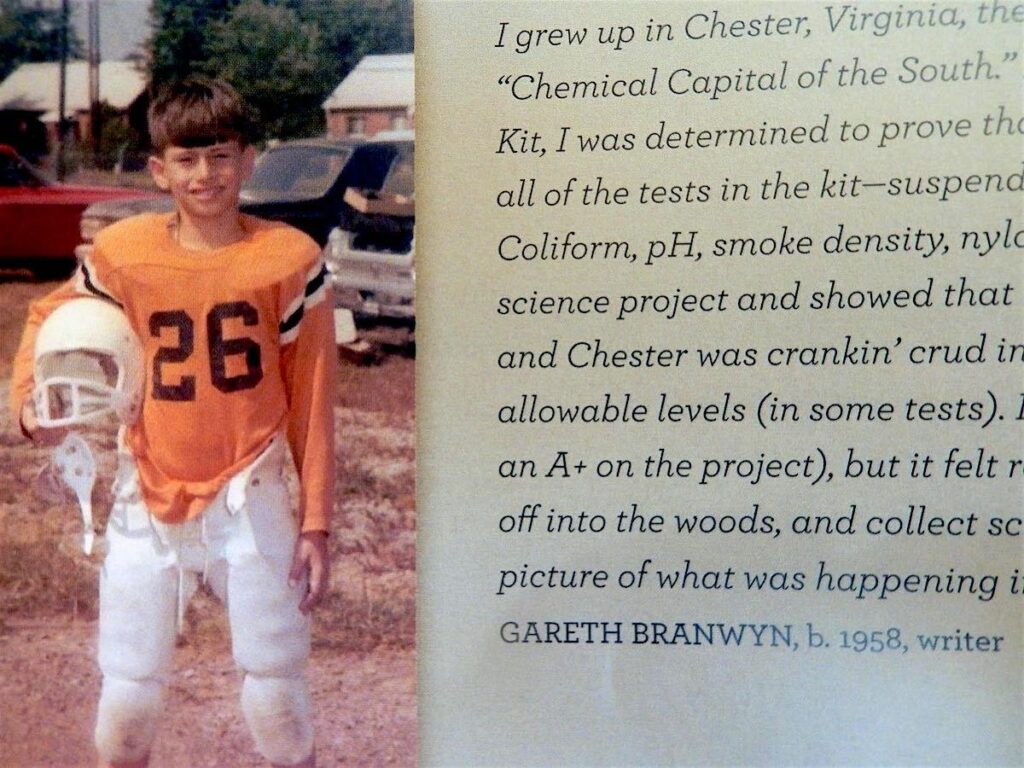
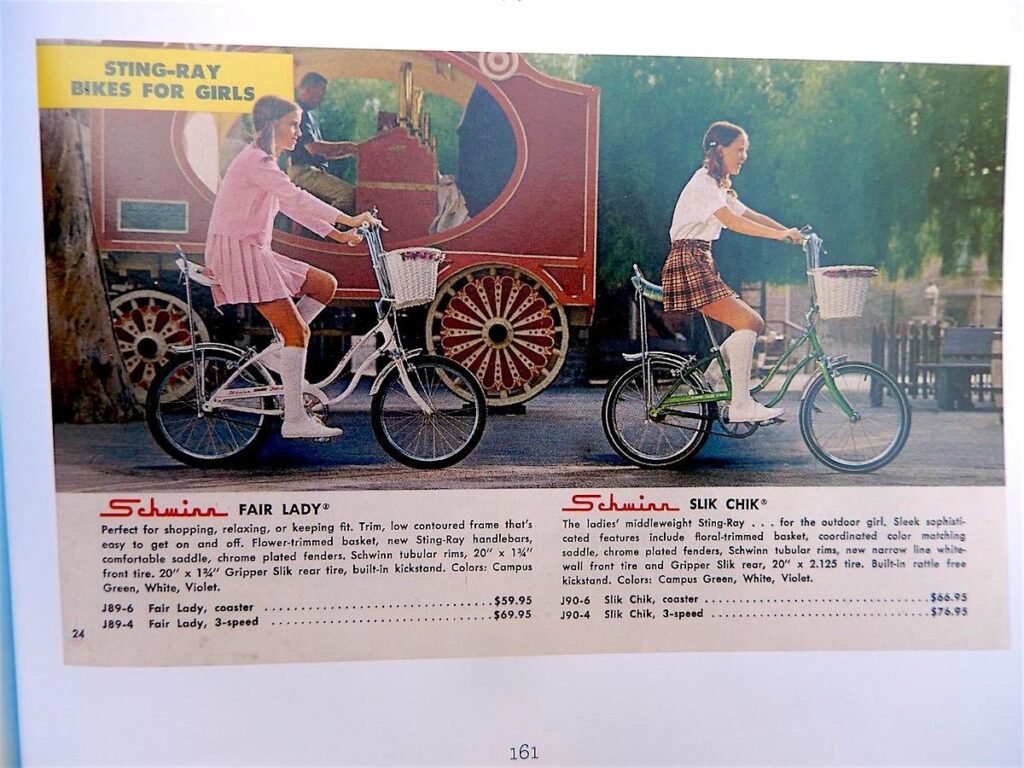
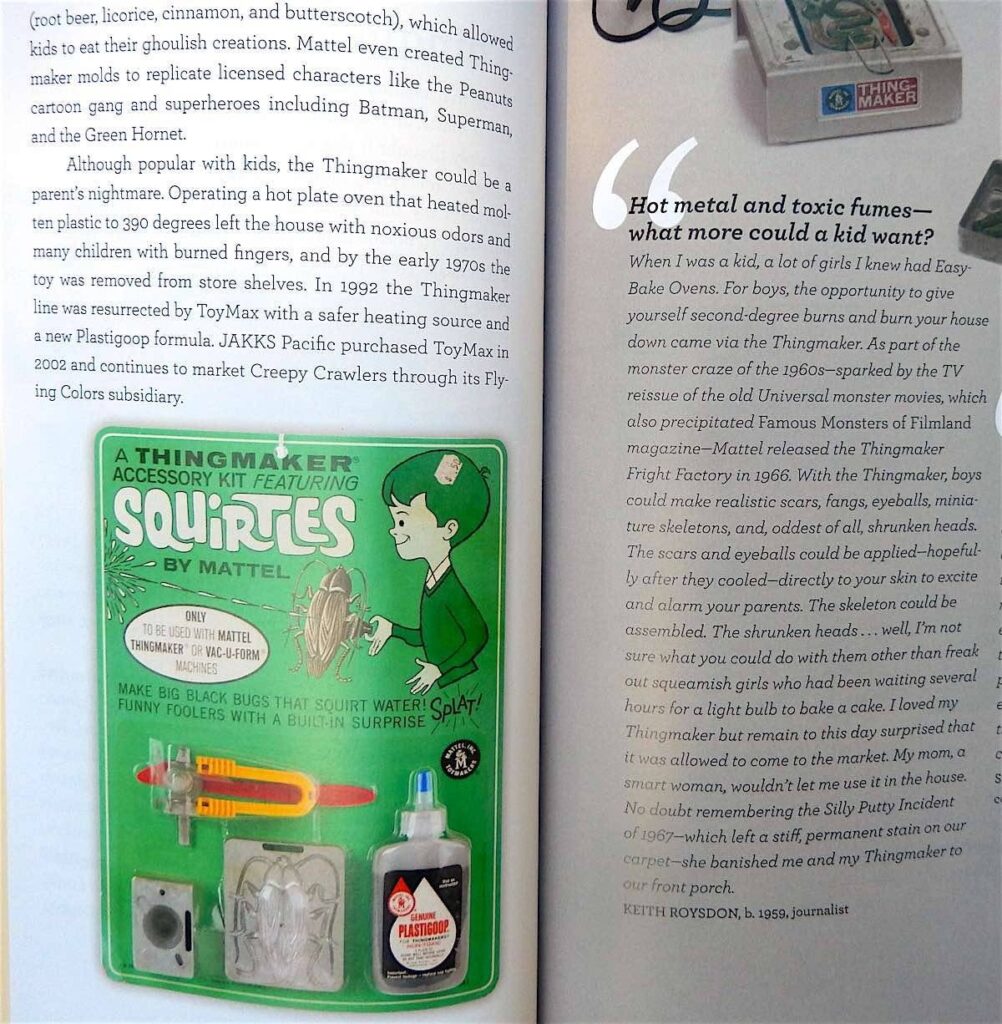
Toys of the ‘50s, ’60s and ’70s
by Kate Roberts and Adam Scher
Minnesota Historical Society Press
2014, 208 pages, 8 x 10 x 0.7 inches (softcover)
There are lots of books about baby boomer toys, but this fun collection is presented from the viewpoint of the kids who played with the toys and includes lots of personal memories and photographs. Sure, there are many interesting facts and histories about well-known toys and their creators. Classic toys and games that are still made today like Tonka trucks, Easy-Bake Oven, G.I. Joe, Matchbox and Hot Wheels, Twister and Mousetrap are featured in loving color photographs and vintage ads. Their stories are well-known, too. For example, writer and artist Johnny Gruelle patented his rag doll design in 1915, the same year his daughter Marcella died after a controversial smallpox vaccination. The Rageddy Ann and Andy dolls and books helped Gruelle keep his memories of his daughter alive.
Famous fads include the ’50s Davy Crocket Coonskin Hats, the ’60s Troll dolls, and the ’70s Pet Rock. Toys always reflect the times they’re from and this book provides plenty of cultural and historical background. Only after the heady 1960s and ’70s with women’s liberation, the sexual revolution, and Black Power movement would there be an anatomically correct African American baby boy doll, Mattel’s Baby Tender Love, molded in life-like vinyl skin called Dublon.
Other less well-known toys are long gone from the toy store shelves but live on in the very personal memories (and actual childhood photographs!) featured throughout the book. Home health training specialist Lisa Crawford (b 1963) appropriately recalls the insanely dangerous metal-tipped lawn Jarts. I was delighted to find Make editor and fellow WINK contributor Gareth Branwyn’s (b 1958) recollection of using his own Johnny Horizon Environmental Test Kit to get an A+ on a school project (and to keep tabs on any hometown polluters!). Learn the mysteries of Ike-A-Doos, create a Cootie, and check out Schwinn’s Lil’ Chik for-girls-only line of bikes.
I was charmed by these personal toy stories. I was also lucky enough to see this show of toys at Seattle Museum of History and Industry. Even if you weren’t able to see this traveling Minnesota Historical Society-curated show, which ended last month, you can explore these memorable toys with the book. – Bob Knetzger
Books That Belong On Paper first appeared on the web as Wink Books and was edited by Carla Sinclair. Sign up here to get the issues a week early in your inbox.
04/22/2521 April 2025
Hoses
Tools for Possibilities: issue no. 134
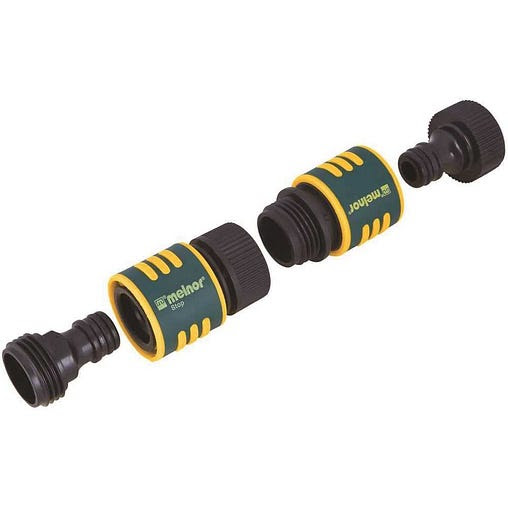
Push & click hose adaptors
These plastic quick connects from Melnor are the gobetweens for the hose and whatever nozzle, sprinklers or other hose-end attachments you may have. They’re especially good for quickly moving and attaching hoses from one faucet to another. I installed them on ALL my faucets (5) and hoses (perhaps 7) and external attachments (probably 10). I have used them for about a year and wonder how I ever got along without them. It takes less than a second (maybe 1/2 second) to attach or detach any hose or attachment. They are installed in pairs, a male and corresponding female connector, with the appropriate threaded fitting to attach to the faucet, hose or nozzle attachment, one on each side of the connection. You just firmly push the connector into its counterpart, and it easily pops into place — firmly means it does need a little pressure, but even a small child could do it. To disconnect, you push the green collar about an eighth of an inch in the one direction it’s capable of moving, and it pops off. (Similar devices have been in use in industry for a long time — on compressed air lines, for example). No more screwing and unscrewing (no more scraped knuckles); no more leaks from incompletely tightened hoses; no more stuck connections because some gorilla (i.e. me) tried to stop a leak by tightening too hard.
One type is designed so that when you disconnect from it, an internal plug pops into place and stops water from coming out. The other type, for between a faucet and hose, does not have the shutoff. When you disconnect the hose from the faucet, water will still flow and the faucet can still be used. There are other brands and styles; some are even made of pricier brass, but I recommend you stick with one manufacturer because connectors are generally not interchangeable between brands. And these inexpensive plastic ones from Melnor are well made: I have (intentionally) very high water pressure (~100 psi, sufficient to burst hoses) on my garden faucets, and I have had no leaks from these connectors. — Robert Ando

Reaching the high spots
We are lucky to have a few apple & peach trees, but they have to be sprayed to insure tasty fruit. Trouble is some are about 20 feet high. I tried a bunch of sprayers, all poor performers, until I discovered the Hudson Trombone Tree Sprayer. It works like using a trombone and throws a great spray — they claim to around 25 feet high and that looks about right. A connecting hose maybe 7-8 feet long rests with a sort of small shower-head-like filter in the bottom of a bucket (not provided).
It uses plain old arm power. You feel like Elliot Ness in the “Untouchables” wielding a Tommy gun, but it works great, is only about $40 (get the one with the two gun grips) and even builds up your forearms and shoulder muscles. It’s also got an adjustable nozzle to adjust spray. It really throws a good heavy directed or dispersed spray; I’m surprised at how much more quickly it gets the job done. Way outperforms pump-up pressure tank ones. — Vince Crisci
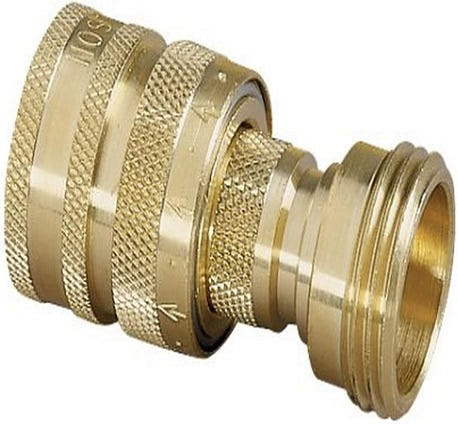
Brass connectors
These brass connectors are MUCH better than the plastic Melnor Quick Connects.
These little brass hose connectors make the job of attaching and detaching hoses quick and simple. You pull the collar back on the female connector, and insert the male connector, and you’re ready to roll. Really, it just takes a second or two to provide a secure, leak-proof connection. There are several brands of cheap plastic connectors out there, but these brass ones will last a lifetime. I have a number of them that are 10+ years old, and they work amazingly well. I attach these to everything hose-related: faucets, both ends of the hoses, and all the attachments, and they save me a lot of time and annoyance.
There are two drawbacks to these connectors: people unfamiliar with them will unscrew the whole set up, so if you have handymen, contractors, or yard men who are going to deal with your hoses, you’ll need to explain how they work. The second is that they’re easily lost and misplaced. Even though these connectors are easily lost, they’re so long-lasting and sturdy that when they turn up again, they’ll work perfectly! — Amy Thomson

Fine misting nozzles
I have used Dramm Fogg-it hose nozzles ($12) for a variety of watering and irrigation purposes for more than ten years. They deliver a fine mist of water and are available in different strengths, measured as gallons per minute: ½ GPM, 1 GPM, 2 GPM and 4 GPM. I’ve used all but the 4 GPM model. The ½ GPM nozzle, attached to a wand, is perfect for laying down a fine mist of water on a hot deck to cool things down using a minimal amount of water. You can also water very fragile seedlings, or mist cuttings with it. I use the 1 GPM nozzle for watering seedlings and seed beds. The 2 GPM nozzle is great for general watering of established plants. The fine mist will not break down soil structure, and delivers slowly enough for the soil to take in the moisture without run-off.
I like the fact that I can tweak the flow rate by switching nozzles. If one takes too long, I use a nozzle with a higher flow rate. Or if the spray is damaging tender seedlings, then I use a more gentle nozzle. The fine spray is also a great way to revive a heat-wilted plant.
These nozzles are solid brass, tough and well made. I toss them around mercilessly. Also, mine have never clogged. They fit onto a standard ¾-inch fitting, so you can screw them onto your hose, or any water wand with a hose fitting. Their only drawback is that they’re small enough to get lost easily. — Amy Thomson
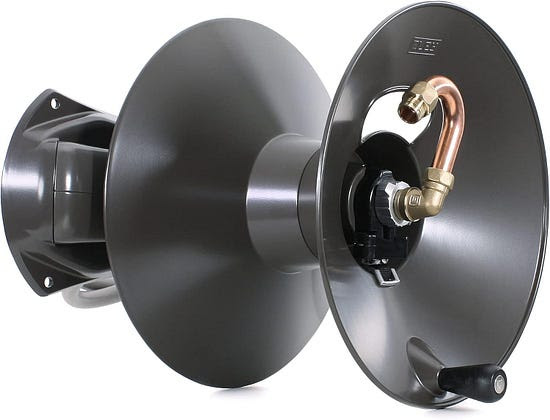
Superior garden hose reel
This is a heavy-duty cast aluminum garden hose reel. It costs about twice as much as the plastic reel I replaced and is at least four times the quality and longevity. The materials used are thick cast aluminum, powder-coated, with real stainless steel fasteners and brass fittings. The fittings and bearings are replaceable and heavy duty. The term bulletproof comes to mind.
The reel is configurable as a parallel or perpendicular mount with either a right or left hand hose mount. The design is modular and well thought out. Even the included hex wrenches are well thought out and long enough to reach easily and are of high quality. As a mechanical designer myself, I am able to appreciate a nice robust design and execution. — Jack Kellythorne

Best garden hose
I spent 20 hours researching garden hoses and discovered that the 50-foot Craftsman Premium Rubber Hose for $40 is the best choice for a garden hose. It is built like a tank — heavy rubber construction and nickel plated brass connectors. It should last years if cared for properly. Not only is it affordable, but it comes with a lifetime warranty that covers you when, not if, the hose eventually breaks. — Oliver Hulland
Once a week we’ll send out a page from Cool Tools: A Catalog of Possibilities. The tools might be outdated or obsolete, and the links to them may or may not work. We present these vintage recommendations as is because the possibilities they inspire are new. Sign up here to get Tools for Possibilities a week early in your inbox.
04/21/2520 April 2025
Retro Recomendo: Nature
Recomendo - issue #458
Our subscriber base has grown so much since we first started eight years ago, that most of you have missed all our earliest recommendations. The best of these are still valid and useful, so we’re trying out something new — Retro Recomendo. Once every 6 weeks, we’ll send out a throwback issue of evergreen recommendations focused on one theme from the past 9 years.
Learn from Nature
Asknature.org is a free online tool where you can search thousands of nature’s solutions to various challenges. Like how a decentralized society helps ants to recover from a food shortage or how maple tree seeds twirl in a tornado-like vortex to increase the reach of where their seeds are planted. Just ten minutes a day exploring this website will get you thinking differently. — CD
Amphibian love songs
A few years ago I took an unforgettable night time tour in a Costa Rican jungle to listen to frog calls, and discovered that humans aren’t the only musicians on Earth. This playlist titled Amphibian Love Songs and Soundscapes took me back to that magical evening. — MF
Star gazing navigation
Stargazing apps on your phone are magic. They work like AR-augmented reality — overlaying the night sky with outlines of constellations, star and planet names, paths of the moon, and even satellite, comet and asteroid sightings. The apps are uncannily accurate, and easy to understand. There are free apps and expensive subscriptions, but I use Star Walk 2 which cost $3. It’s the best $3 space investment I’ve ever made. — KK
Namibia live stream
This live feed of a watering hole in the Namib Desert streams live 24/7. I drop in a couple times a week and I’ve seen so many different animals sharing the waterhole. I’ve seen zebras, wildebeests, warthogs, ostriches and lot of different birds. The camera has a microphone and night vision, so you’re always connected to this magical and awesome wildlife. — CD
Nature live cams
For a dose of awe and wonder head over to Explore. org and choose from almost 100 live nature cams available at any time. There’s ocean cams, bears, gorillas, puppies and kittens and other animal sanctuaries (this sheep barn can be pretty mesmerizing to watch when they’re in for the night). — CD
Identify nature app
There is utility and pleasure in being able to identify wild creatures and plants. But it’s a steep learning curve. The fastest way I found to learn is via the iOS app Seek, which will identify flowers, plants, fungi, animals, bugs instantly. It’s kind of magical. You point your phone at the specimen and it tells you the species about 95% of the time (in North America). The other 5% it can often identify the family. Someone called it Shazam for nature. The app is patient; you can keep asking it to ID the same thing you asked about before and it will will answer again with no judgement. Seek is free; it was developed by folks who did iNaturalist, an app that uses crowdsourcing to identify species, but Seek uses machine learning to render the ID instantly. I’ve been impressed by how well this magic works. Kids and teachers love it. It gives them a superpower to name everything around them. — KK
04/20/2518 April 2025
Gar’s Tips & Tools – Issue #197
Access to tools, techniques, and shop tales from the diverse worlds of DIY
5 Newbie Tape Measure Mistakes
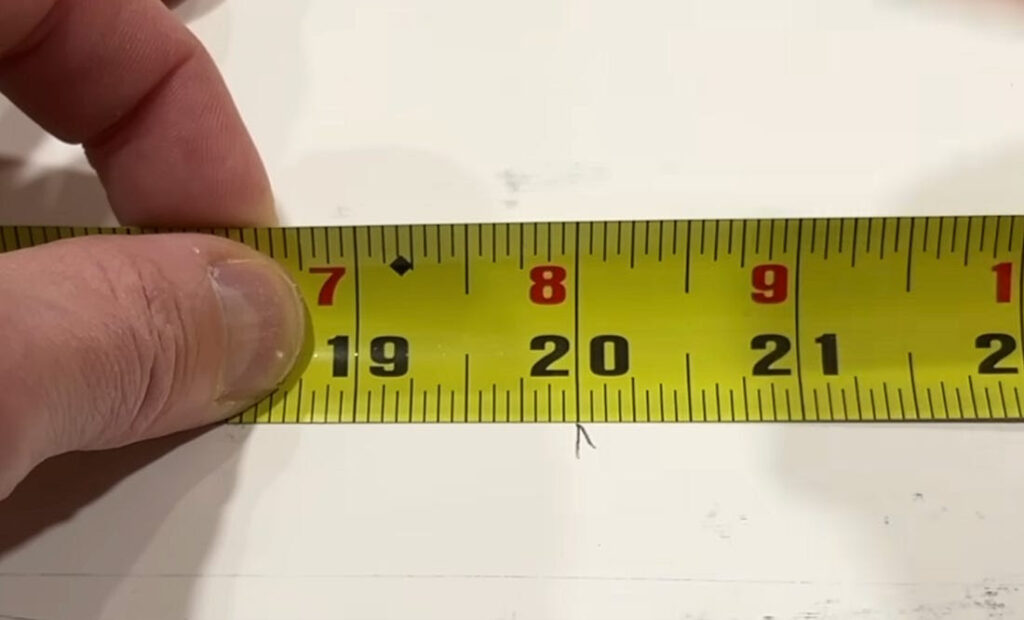
I have watched so many tape measure tips and tricks videos over the years that you’d think I’ve seen everything. But there’s always more to learn about any tool, so it’s always worth giving them a peek. In this Honest Carpenter video, he covers things like not marking under the curve (that’s built into the tape for stability and strength), not marking too close to the case, and understanding how the end tab works for getting accurate inside and outside measurements. All pretty basic stuff, but definitely a must-watch for any beginner.
The Best Adjustable Wrench Might Surprise You
Adjustable wrenches are a must-have in any toolbox, but do you really need to spend over $100 on a Snap-On to get the best? Todd of Project Farm recently test-compared budget-friendly options (as low as $10) against high-end models ($136), putting them through strength, precision, and grip tests. Surprisingly, the $25 Milwaukee outperformed many competitors, offering a solid grip, six points of contact for better stability, and resistance to self-adjustment under vibration. Craftsman and SK also delivered impressive results at a fraction of Snap-On’s $136 price. For pros who need the absolute best and don’t mind paying for it, Snap-On still dominated in turning power and durability, but if you’re looking for big bang for your buck, Milwaukee is the way to go. Want a wrench that won’t round bolts and will literally last a lifetime? Weight, precision machining, and a solid adjustment screw make all the difference.
Getting Rid of Toxic Liquids
Did he just say he uses diapers? That was my response when I overheard an artist friend talking to another artist about how he gets rid of waist acrylic paint instead of dumping it down the sink. He buys cheap adult diapers, keeps them in his studio, and then when he’s done cleaning his brushes and tools, he dumps the waste water into the diaper. That got me thinking about other safe disposal methods for other toxics. Below is a video of Dirt Farmer Jay discussing various methods of getting rid of latex paint. What are some of the methods you use for getting rid of nasty liquids in in the shop?
Buying Locally
I’ve also always been a fan of the concept of resilient community, efforts to create local communities that are strong, that have intelligent systems in place for natural disasters and other threats, that encourage sustainability, small businesses, local farm-to-table, etc. Lately, I’ve made it more of a priority to support small businesses here in my small town, and every time I do, I feel like I’m contributing positively to our community’s growth and well-being. It feels good to go to the local hardware store, talk to actual people who know tools and materials, and buy from them rather than an online source. I also try and support small online businesses, like Taylor Toolworks and Adafruit.
3D Printed Soldering Station/Fume Extractor
I love this 3D-printed fume extractor that The Byte-Sized Engineer created to marry with the iFixit portable soldering station. As Zach points out, there are instances where you need your electronics to be away from your workbench. This little set-up is perfect for that. In the video, Zach tests out different ways of powering the 12-volt PC fan for the extractor before settling on using the second USB-C port thoughtfully included in the soldering station. He added a USB-C breakout board and a USB-C Power Delivery (PD) board. Some CAD work and 3D printing later, and he now has a sweet little portable, battery-powered soldering station.
3D-Printable Solder Scroll
In more 3D printing and soldering news, the 3D guru himself, Josef Prusa, posted this to his Instagram channel. It’s a solder spool pencil where your feed the solder to your workpiece with a scroll wheel.
More of Your Inspired Objects
I’m still getting fun and interesting responses to my inspired object piece from a few issues ago:
Michael Finn:
The Europiccola from La Pavoni is not just a thing of beauty, but an elegant tool that one must practice and work at to achieve coffee brilliance. Even if I never become a latte artist, my Europiccola will be my favorite expression of coffee making. This one is from 1983 rebuilt and used every day.

John Young:
My candidate is my Nikon F camera. This 56-year-old photo shows me, still in high school, using one that I bought from a returning Vietnam vet. After using it heavily in high school and college, it served me through a 30-year newspaper career and still functions as new after thousands of rolls of film. The design of the Nikon F — if not the durability –was mimicked by just about every camera-maker into the digital age. Few shop tools outside of a hammer could survive that level of use and abuse while maintaining functionality — certainly nothing as complex as a camera’s mechanisms.

Gar’s Tips, Tools, and Shop Tales is published by Cool Tools Lab. To receive the newsletter a week early, sign up here.
04/18/25ALL REVIEWS
EDITOR'S FAVORITES
COOL TOOLS SHOW PODCAST
WHAT'S IN MY BAG?
16 April 2025

ABOUT COOL TOOLS
Cool Tools is a web site which recommends the best/cheapest tools available. Tools are defined broadly as anything that can be useful. This includes hand tools, machines, books, software, gadgets, websites, maps, and even ideas. All reviews are positive raves written by real users. We don’t bother with negative reviews because our intent is to only offer the best.
One new tool is posted each weekday. Cool Tools does NOT sell anything. The site provides prices and convenient sources for readers to purchase items.
When Amazon.com is listed as a source (which it often is because of its prices and convenience) Cool Tools receives a fractional fee from Amazon if items are purchased at Amazon on that visit. Cool Tools also earns revenue from Google ads, although we have no foreknowledge nor much control of which ads will appear.
We recently posted a short history of Cool Tools which included current stats as of April 2008. This explains both the genesis of this site, and the tools we use to operate it.





